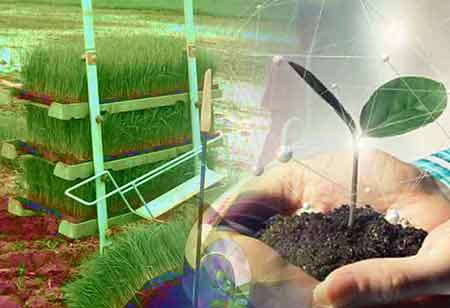Thank you for Subscribing to Agri Business Review Weekly Brief
Advantages & Disadvantages of Greenhouses
While we utilize it tongue in cheek, the term "greenhouse effect" regarding our earth is a more complex and serious consideration for our global environment.

By
Agri Business Review | Wednesday, August 17, 2022
Stay ahead of the industry with exclusive feature stories on the top companies, expert insights and the latest news delivered straight to your inbox. Subscribe today.
For the home gardener, the impact of a greenhouse on plants can be very positive.
FREMONT, CA: Greenhouses functions as a shield between nature and what you are growing and thus allow growing seasons to be extended and possibly improved. In addition, they provide shelter from excess cold or heat as well as pests.
While we utilize it tongue in cheek, the term "greenhouse effect" regarding our earth is a more complex and serious consideration for our global environment. Still, for the home gardener, the impact of a greenhouse on plants can be very positive.
The concept behind a certain type of greenhouse is to create a place to keep heat. The structure hinders thermal energy flow, and the sunlight that passes through the transparent "walls" of a greenhouse heats the ground in the greenhouse, which radiates warmth and heats the air. Or, if too much heat is an issue, a greenhouse can support you create or regulating a more temperate environment for plants by counting a cooling mechanism.
Types of Greenhouses
What type of greenhouse you require depends on where you live and what you want to grow. Greenhouses are classified in a variety of ways.
Temperature - The spectrum of structures according to the environmental temperature needs includes the following types:
Cold Houses – (Temperature: Falls below freezing) Protect plants, but temperatures still can get below freezing because this type of greenhouse has no additional heat source installed. The objective of cold houses is to extend the growing season in the spring by allowing starting crops earlier and in the fall by enabling crops to grow longer.
Cool Houses – (Temperature: 45-50F) This kind of greenhouse will retain temperatures above freezing so plants that die from extreme cold can survive.
Warm Houses – (Temperature: 55F) Enables a wider range of plants to survive cold winters.
Hot Houses – (Temperature: beyond 60F) Hot greenhouses are employed to maintain tropical plants. To heat, they need supplemental heat.
Within each of these common types, there are many other considerations. For example, there are very simple greenhouses and highly complex ones. The more technology involved, the greater the ability to control the growing conditions, from temperature to water and moisture levels. Greenhouses can also be constructed simply to reduce direct sunlight (a shaded greenhouse) and not have walls or a screen-only structure to keep out insects.
Design –Greenhouses can also be evaluated according to the design style. This is the fun part. Some of the conventional types of greenhouse "architecture" involve A-Frame, Dome, Gothic (arched), Lean-To (can even be designed to employ the wall of a home or garage as one side), and Quonset.
Materials – For the residential gardener, the options are almost limitless. Price will likely drive some of the decision-making on this, as well aesthetic considerations and your purpose. All have benefits and drawbacks.
Support/Framework Options: wood (rots smoothly), aluminum, iron and plastic. Some possess curved eaves; others have flat eaves.
Covering Options: glass (most costly but lasts longest, also beautiful), fiberglass (can become discolored), plastic (cheap but effective), double-layered polyethylene (must replace every 2-3 years), PVC, acrylic (very expensive).
Environmental Control Options: Budget will impact what you can do in this area. Automatic controls are perfect in a greenhouse but clearly will be more pricey. Your options for heating equipment contain a simple space heater, forced-air heat, radiant heat, steam or hot water systems, and soil heating pipes underneath plants. Automatic watering systems for bigger greenhouses are nice. Planning for ventilation is also important for the health of your plants.
Some Pros and Cons
After consuming yourself in the overwhelming amount of information about the huge number of choices and decisions about what type of greenhouse you could build, let's revisit some of the reasons you would want to do this – or not.
The Benefits of a Greenhouse:
• Fresh greens, vegetables and fruit
• Transplant accessibility and success
• Fresh cut flowers all year long
• It's a warm place to go when it's cold and gray outside
• Capacity to grow things you wouldn't if be able to grow (exotic flowers, tropical fruit)
• No longer battles with squirrels and insects
• More like what you love to do, longer. Add beauty & visual appeal to a landscape.
The Disadvantages of a Greenhouse:
• It can be expensive to build
• It can be expensive to heat
• Requires constant monitoring, maintenance and care
• Could increase electrical and water bills
It May detracts from the aesthetic appeal of a garden





